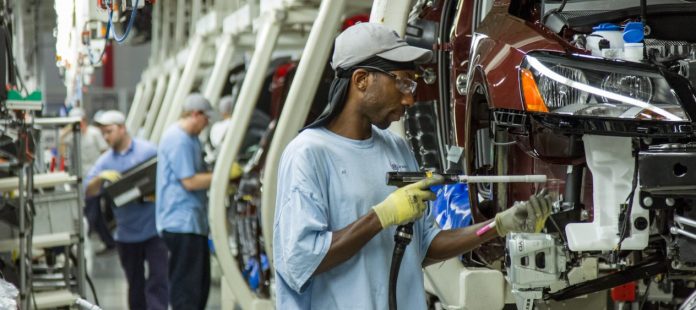Economic growth is slowing, right? We’re getting signals suggesting that it’s happening, at least, across nearly every industry. And a weak jobs report in February may have confirmed it.
Heck – even the yield curve has inverted.
But at the same time, almost inexplicably, U.S. weekly jobless claims (the number of Americans filing for unemployment) have dropped to a 49-year low as of last week.
Huh?
Even though the economy only added 20,000 jobs in February, the jobless rate keeps dropping. This time, to historically low levels.
It’s an auspicious sign to be sure, and a possible indicator that Friday’s March jobs report could be unexpectedly good, blowing past analyst estimates.
And if it turns out that the US did indeed add scores of new workers over the last month, you can be sure that bulls will roar in approval – potentially launching the market towards its all-time-highs of late September.
The Labor Department, who reported these statistics, says there’s been no increase in layoff rates even in the face of a slowing economy. In their opinion, the February jobs report “miss” was likely due to a shortage of skilled workers. Because unemployment has been so low, companies are now having a hard time filling certain positions.
And though job growth has slowed from last year’s 225,000 new jobs per month pace, the current rate of increase is enough to keep up with the current working age population growth. The net result is an unemployment statistic that will continue to stay low.
Analysts, upon seeing the data, cautioned investors that a drop in unemployment claims will not necessarily lead to a strong March jobs report. Moreover, disappointing jobs growth is not at all out of the question – especially in the face of poor economic data, like the decline of corporate debt, something that has unfairly been overlooked these last few months.
If there were any holdouts that still think the economy isn’t slowing down, all they need to do is check out the current state of the corporate debt market.
Debt activity slowed to a crawl at the start of 2019, even with a raucous post-Christmas rally in full swing, and corporate lending (and borrowing) virtually “froze” for months.
It was largely caused by late 2018’s stock market correction, and as equities are now on the rise, analysts are watching intently to see if corporate debt activity starts to pick up again as well.
Sadly, the Q1 2019 data hasn’t been very encouraging. Overall lending dropped 36% compared to Q4 2018, and leveraged loans – loans that are extended to companies or individuals that already have considerable amounts of debt and/or a poor credit history – sunk a staggering 56%. This hamstrung the debt markets, as leveraged loans accounted for 55.2% of all corporate debt in 2018.
And though it might be seen as a good thing for corporate debt to reduce its stake in what basically amounts to the corporate version of subprime mortgages, the fact is that leveraged loans have fueled the growth of many American corporations – with both lenders and borrowers being beneficiaries of the “risky debt”.
So, while it might be tempting to get excited about the low unemployment statistics released this morning, the truth is that a slowdown has already happened, and it’s going to get worse before it gets any better.
Evidence out of the corporate debt market confirms it.
The real question we should be asking is not if growth is slowing, but how much.
The sooner investors can wrap their heads around that, the better, because in the coming months, the market could start to look pretty ugly if the major indexes fail to break through their all-time-highs – an encounter that’s to take place in the next week or two.








